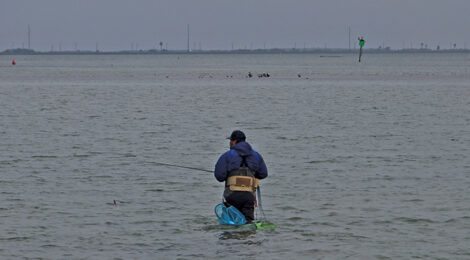
Winter Wade Fishing
Coastal anglers that spend some time in the water during late winter are often rewarded with above average catches.
Story and photography by Danno Wise
On the surface, it does not sound pleasant at all. Cold weather, cold water and wading don’t seem to go together, at least not in any way that seems even the least bit enjoyable. However, getting in the water and wading is absolutely one of best ways to target fish in one to four feet of water during later winter.
All of the advantages of wade fishing are still applicable during winter, only amplified. For instance, being able to control your speed and movement is even more critical during winter when fish are often sluggish and not aggressively chasing baits. Being able to stay in one spot and thoroughly cover the water by blanketing the entire area with multiple casts is often the difference between being able to trigger strikes and going home empty handed. This is especially true on windy days that are often the case during winter, and/or when targeting big fish such as sow specks.
Speaking of sow specks, wading is widely considered the best way to target them during late winter through spring. Again, the typical advantages of stealth, etc, come into play. However, being able to stop in one spot and work baits from a standstill as opposed to drifting is exceeding important when fishing for big trout with slow-sinking baits or topwater plugs.
Of course big trout don’t hit on every cast, so being able to make multiple casts to a single spot – as mentioned above – helps increase the odds of a big trout taking the bait, so to speak. Furthermore, winter weather should not discourage sow speck seekers, as some of the best days for tricking trophy trout come during “duck hunting weather” – cool, overcast and foggy or drizzly.
************************************************************************
To read more, click here to SUBSCRIBE







